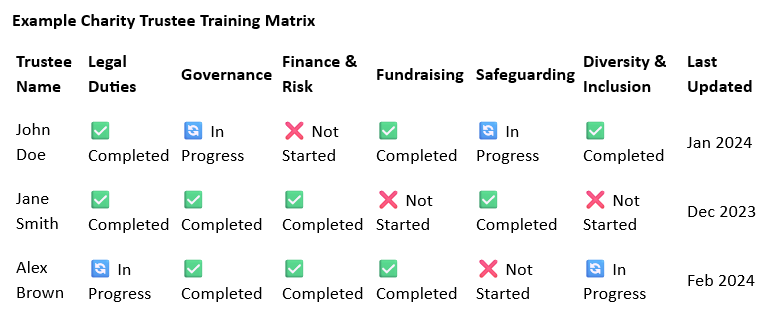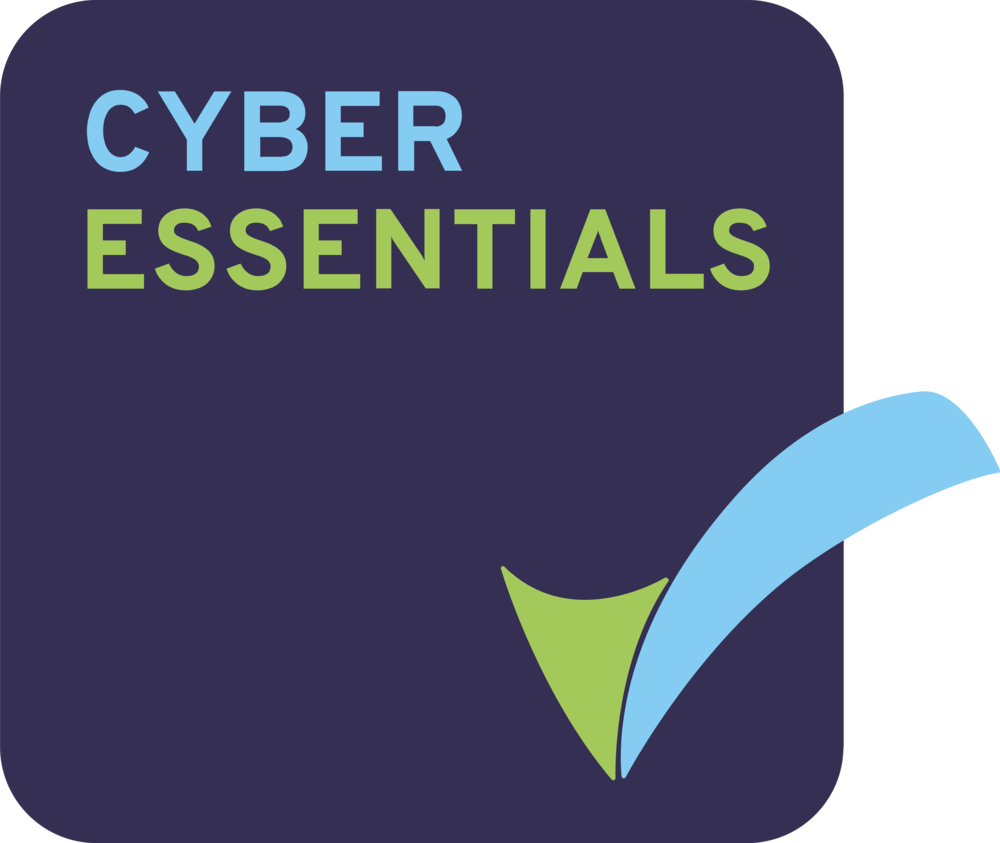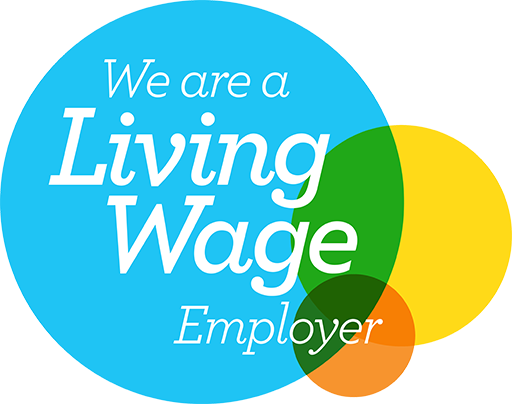
All charity trustees have legal duties and responsibilities under the 2005 Act. A duty is something that you must do, and all the duties must be met. These duties are separated out into general duties, that set out a broad framework that all charity trustees must work within, and specific duties detailed in the 2005 Act.
The general and specific duties apply equally to all charity trustees and to all charities registered in Scotland. All of the charity’s trustees should work together to make sure that these
These page set out to explain what a trustee is, what the law says charity trustees must do or must not do.
The charity trustee duties are set out in The Charities and Trustee Investment (Scotland) Act 2005 referred to in this Guidance as the 2005 Act.
Charities and Trustee Investment (Scotland) Act 2005: Glossary of Terms to help understand the rules and regulations of being a trustee.
What is a Trustee?
A trustee is an individual who takes on the responsibility of overseeing and guiding the operations of a charity or voluntary organisation. Trustees play a vital role in ensuring that the organisation is run effectively, legally, and in line with its stated aims.
Key Responsibilities of a Trustee
Trustees in Scotland are responsible for:
- Governance – Ensuring the charity is well-managed and operates within its purpose and objectives.
- Compliance – Following charity law and other relevant regulations, including the Charities and Trustee Investment (Scotland) Act 2005.
- Financial Oversight – Managing resources responsibly and ensuring financial stability.
- Strategic Planning – Helping shape the long-term vision and priorities of the organisation.
- Accountability – Acting in the best interests of the charity and its beneficiaries.
Who Can Be a Trustee?
Most adults can become trustees, but there are some restrictions. Individuals may be disqualified if they:
- Have been declared bankrupt.
- Have unspent criminal convictions involving dishonesty.
- Have been removed as a charity trustee by the Office of the Scottish Charity Regulator (OSCR) or another regulatory body.
Why Become a Trustee?
Being a trustee is a rewarding way to give back to your community, develop new skills, and make a real difference. It is an opportunity to:
- Gain leadership and governance experience.
- Meet like-minded people and expand your network.
- Contribute to a cause you are passionate about.
Legal and Regulatory Framework
Trustees must adhere to the guidance set by OSCR, Scotland’s charity regulator. The key legal duties include:
- Acting in the best interests of the charity.
- Ensuring the charity operates in a manner consistent with its purposes.
- Acting with care and diligence.
- Managing any potential conflicts of interest properly.
Trustee Role and Tasks
Here are the key tasks a trustee in Scotland would typically have:
Governance & Strategy
- Ensuring the charity operates within its stated objectives and complies with legal requirements.
- Setting and reviewing the charity’s vision, mission, and strategic direction.
- Attending and contributing to trustee board meetings.
Financial Oversight
- Approving budgets and monitoring financial performance.
- Ensuring proper financial controls are in place.
- Reviewing and approving annual reports and accounts.
Compliance & Risk Management
- Ensuring the charity complies with the Charities and Trustee Investment (Scotland) Act 2005.
- Overseeing policies on safeguarding, GDPR, and health & safety.
- Identifying and managing risks to the organisation.
Operational Oversight
- Supporting and overseeing the work of staff and volunteers (if applicable).
- Ensuring policies and procedures are up to date and effective.
- Making key decisions in the best interests of the charity.
Public Relations & Advocacy
- Representing the charity to stakeholders, funders, and the wider public.
- Promoting the charity’s work and seeking opportunities for growth.
- Helping to secure funding through grant applications, sponsorship, or donations.
Acting with Integrity & Accountability
- Acting in the best interests of the charity and its beneficiaries.
- Avoiding conflicts of interest and declaring any personal interests.
- Keeping up to date with trustee responsibilities through training and guidance.
Trustee Training
Here are key training areas recommended for trustees in Scotland:
-
Governance & Legal Responsibilities
- Introduction to Trustee Roles & Responsibilities – Understanding legal duties under the Charities and Trustee Investment (Scotland) Act 2005.
- Good Governance & Board Effectiveness – Best practices for running a strong, accountable board.
- Conflict of Interest & Ethical Decision-Making – Identifying and managing potential conflicts.
-
Financial Oversight & Risk Management
- Understanding Charity Finances – Basics of budgeting, financial oversight, and reading financial reports.
- Fundraising & Income Generation – Rules around fundraising, grant applications, and sustainable funding.
- Risk Management & Compliance – Identifying and mitigating risks, including safeguarding, GDPR, and health & safety.
-
Strategic Planning & Leadership
- Developing a Strategic Plan – Setting long-term goals and ensuring sustainability.
- Effective Decision-Making & Leadership Skills – Building confidence in governance roles.
- Equality, Diversity & Inclusion (EDI) – Creating an inclusive and representative board.
-
Operational & Digital Skills
- Digital Governance & Cyber Security – Protecting charity data and using technology effectively.
- Volunteer & Staff Management – Understanding best practices in employment law and volunteer coordination.
- Marketing & Communications for Trustees – Engaging with stakeholders and promoting the charity’s mission.
-
Sector-Specific & Advanced Training
- Safeguarding & Child/Vulnerable Adult Protection (if applicable to the charity’s work).
- Climate Change & Environmental Responsibility in Charities – Sustainable charity operations.
- Advanced Governance & Chairperson Training – For trustees taking on leadership roles within boards.
Training Matrix
A well-adapted training matrix ensures that a charity’s leadership is knowledgeable, effective, and legally compliant. It improves governance, strengthens risk management, and enhances public trust, making the charity more successful in fulfilling its mission.
Key Reasons to Adapt a Training Matrix for Your Charity
-
Ensuring Legal and Regulatory Compliance
- Charities must comply with legal duties, such as those outlined by the Charity Commission (UK), IRS (US), or other governing bodies.
- Training ensures trustees understand their fiduciary responsibilities, governance, and risk management to avoid penalties and reputational damage.
- Topics such as GDPR, safeguarding, fundraising regulations, and financial accountability need to be up-to-date.
-
Improving Governance and Decision-Making
- A well-trained board makes better strategic decisions that align with the charity’s mission.
- Understanding governance best practices leads to greater transparency, accountability, and ethical leadership.
- Helps trustees recognize conflicts of interest and financial oversight issues before they become problems.
-
Tailoring Training to the Charity’s Specific Needs
- Different charities have different priorities—e.g., a children’s charity may focus on safeguarding, while a grant-making charity may prioritize financial compliance.
- The matrix can be customized for different trustee roles, ensuring specialists (e.g., treasurers, legal advisors) receive targeted training.
- Identifies skill gaps in the board and helps with succession planning.
-
Increasing Trustee Engagement and Confidence
- Many trustees are volunteers who may not have prior charity governance experience.
- Structured training ensures they feel confident in their role and can contribute effectively.
- Encourages continuous learning and professional development, preventing trustees from feeling overwhelmed.
-
Strengthening Public Trust and Fundraising Efforts
- Donors and grant providers expect charities to be well-managed and accountable.
- A properly trained board builds credibility, making it easier to secure funding and partnerships.
- Trustees with fundraising and financial training can better support sustainable income generation.
-
Risk Management and Crisis Preparedness
- Identifies potential risks, from financial mismanagement to reputational damage.
- Ensures trustees are prepared for crises, such as safeguarding incidents or regulatory investigations.
- Keeps the board updated on emerging challenges, like changes in laws, cybersecurity threats, or public relations issues.
-
Encouraging Diversity, Equity, and Inclusion (DEI)
- Training can focus on unconscious bias, accessibility, and inclusive leadership, ensuring a more representative and equitable board.
- A diverse, well-trained board enhances decision-making and better reflects the communities the charity serves.
A training matrix for a charity trustee helps track the skills, knowledge, and training required to ensure trustees effectively govern the charity. It ensures compliance with legal responsibilities and best practices in governance.
Key Components of a Charity Trustee Training Matrix
- Trustee Names/Roles – Lists each trustee and their responsibilities.
- Required Training Areas – Covers legal duties, governance, finance, fundraising, safeguarding, etc.
- Completion Status – Indicates whether training has been completed.
- Expiry/Renewal Dates – Tracks mandatory training that needs periodic refreshers.
- Competency Level – Assesses confidence or expertise in key areas (e.g., beginner, intermediate, expert).
- Training Methods – Specifies if training was online, in-person, self-directed, or through external providers.

Why Use a Training Matrix for Trustees?
- Ensures compliance with legal responsibilities.
- Identifies skill gaps for targeted training.
- Supports better governance and decision-making.
- Improves trustee engagement and accountability.
How to Adapt the Training Matrix to Your Charity’s Needs
- Identify Core Training Requirements
- Define mandatory vs. optional training areas (e.g., safeguarding may be mandatory for some but not all trustees).
- Align with regulatory requirements and the charity’s mission.
- Assess Existing Skills and Gaps
- Use a self-assessment or trustee skills audit to determine strengths and weaknesses.
- Focus on areas needing improvement and professional development.
- Set Training Priorities and Timelines
- Decide which training needs annual refreshers (e.g., safeguarding, GDPR).
- Ensure onboarding training for new trustees and ongoing learning for experienced ones.
- Use a Flexible Training Approach
- Offer a mix of online courses, in-person workshops, mentorship, and peer learning.
- Provide training resources that fit different learning styles and trustee availability.
- Review and Update the Matrix Regularly
- Assign responsibility for tracking progress (e.g., Chair, Secretary, HR).
- Update training records when regulations change or when trustees complete new courses.
Would you like a template or a customised version for your charity’s needs?
Additional Links
Many third sector interfaces (TSIs) offer training, networking, and guidance to help trustees fulfill their roles effectively. If you are considering becoming a trustee or need support in your role, contact your local TSI for advice and resources. You can also find useful resources and training at:
Additional Trustee Support on OSCR site
OSCR has also created An Easy Read Guide to being a Charity Trustee.
Also Trustee Good Guidance and Good Practise guide
Guidance and good practice for charity trustees
This guidance is written in an 'Easy Read' format and is designed specifically for people who have difficulty reading. There is a British Sign Language version of this guidance available here.
Charities and Trustee Investment (Scotland) Act 2005: Glossary of Terms
Further help and information


